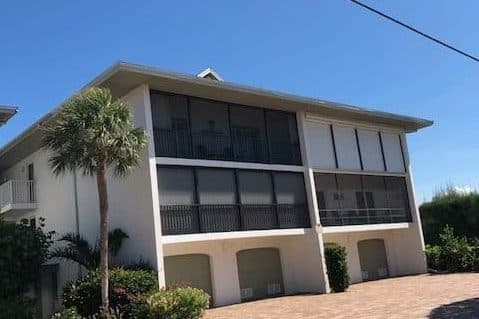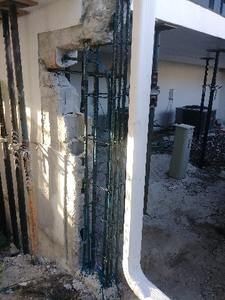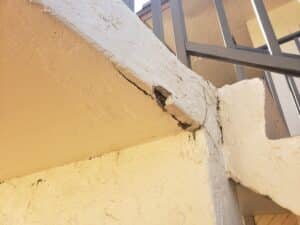Living in a condo or being part of a Homeowners Association (HOA) comes with its own unique set of rules and requirements, especially when it comes to home renovations like window and door replacements. It’s not as straightforward as simply deciding to swap out your old windows for new ones, or replacing that creaky front door.
There are regulations to adhere to, neighbors to consider, and sometimes, even aesthetics to maintain. Navigating through all these can be quite a challenge, especially if you’re not familiar with the process. That’s where this guide comes in. We’ve put together a comprehensive manual to help you get through the often complicated process of window and door replacement in condos and HOA communities.
From understanding the rules and bylaws to finding the right contractor, we’ve got you covered. Consider this your roadmap to a successful, stress-free renovation project.
Understanding the EIFS System and Its Components
Exterior Insulation and Finishing Systems (EIFS) are multi-layered cladding systems that combine insulation, waterproofing, and a decorative finish. EIFS are typically composed of four main components:
1. Insulation board: Usually made of expanded polystyrene foam (EPS), the insulation board is attached to the exterior wall, offering energy efficiency and thermal performance.
2. Reinforcing mesh: A durable, fiberglass mesh is embedded within a base coat material to provide strength and impact resistance for the EIFS.
3. Base coat: This layer of cementitious material is applied over the reinforcing mesh to provide a strong, smooth surface.
4. Finish coat: The final layer of EIFS is a textured, acrylic finish that creates an attractive appearance and acts as a weather-resistant barrier.
EIFS foam trim, an essential component of the system, adds architectural detail and enhances the visual appeal of the property.
Recognizing Signs of EIFS Foam Trim Damage
Identifying and addressing potential issues early can maximize the performance and aesthetics of your EIFS-clad property. Keep an eye out for these common signs of EIFS foam trim damage:
1. Cracks: Hairline cracks near windows, doors, or trim joints can result from normal settling or structural movement but might indicate weakness in the EIFS system if left untreated.
2. Delamination: Separation between the foam trim and the underlying insulation board can occur due to adhesive failure or moisture infiltration.
3. Discoloration: Uneven staining or color fading can result from exposure to sunlight, water damage, or inadequate finish coat application.
4. Moisture intrusion: Check for soft, damp areas or mold growth around window and door openings, trim intersections, or drainage areas.
Addressing these issues promptly will help maintain the appearance and functionality of your EIFS-clad property.
Preventing and Addressing Associated Issues
Proactive care and maintenance can alleviate potential issues and make EIFS foam trim repairs more manageable. Take these steps to prevent and address common problems:
1. Regular inspections: Conduct routine inspections of your EIFS-clad property, focusing on trouble spots like windows, doors, and trim intersections.
2. Prompt repairs: Address identified damages immediately to prevent further deterioration and moisture infiltration.
3. Proper sealing: Ensure joints between windows, doors, and EIFS foam trim are sealed correctly to avoid water intrusion.
4. Drainage systems: Regularly inspect and maintain gutters, downspouts, and flashing to direct water away from the EIFS system.
5. Maintenance: Clean EIFS foam trim and surfaces with a mild detergent and water to remove dirt, stains, and mold.
Following these recommendations can help prolong the life and performance of your EIFS-clad property.
Hiring a Professional Contractor for Effective Repairs and Maintenance
Choosing the right contractor for your EIFS foam trim repairs will ensure a successful project outcome. Consider these factors when selecting a professional:
1. Certifications: Verify your contractor’s Florida General Contractor certification and insurance, ensuring they are qualified to work on EIFS projects in your condo or HOA community.
2. Experience: Confirm the contractor’s experience in EIFS foam trim repairs, assessing their ability to handle unique challenges associated with your property.
3. References: Request references and review past work, ensuring the contractor can deliver quality results in line with your community’s expectations.
4. Written estimates: Obtain detailed, written estimates from multiple contractors, comparing costs, scope, and timelines to find the best fit.
Partnering with a reliable, experienced contractor like McLeod’s Contracting Solutions guarantees high-quality EIFS foam trim repairs and maintenance.
Understanding the Basics of Window and Door Replacement in Condos and HOA Communities
Window and door replacement in condos and HOA communities can seem like an overwhelming task. However, with a thorough understanding of the guidelines, a keen eye for quality, and the assistance of a professional, you can ensure a smooth and successful replacement process.
Take the first step towards revitalizing your community’s EIFS foam trim by contacting McLeod’s Contracting Solutions today. Our team of certified Florida general contractors is ready to help assess, repair, and maintain your property’s EIFS system, ensuring long-lasting beauty and performance.







